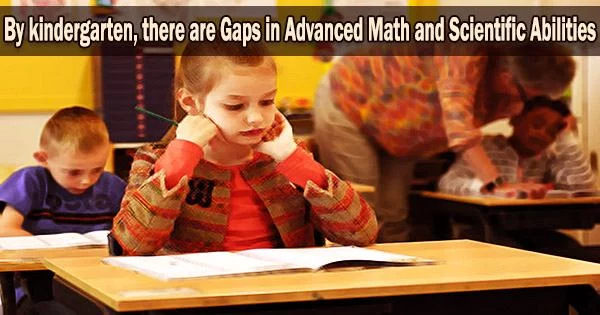Far earlier than previously thought, racial and ethnic differences in advanced math and science abilities exist in the United States. In kindergarten, 13% of white pupils and 16% of Asian students have advanced math skills, according to our most recent study. For both Black and Hispanic kids, the disparity is 4%.
Then, throughout elementary school, these differences persist. 13% of white pupils and 22% of Asian students demonstrate advanced arithmetic skills by the fifth grade. 3% of Hispanic pupils and 2% of Black students, respectively, do this. Advanced science skills show similar differences.
What explains these disparities? The socioeconomic position of the family, including parental education and household income, as well as the student’s own proficiency in math, science, and reading at kindergarten, are all factors that consistently explain these inequalities.
We discovered these results in analyses of a sample of 11,000 pupils from U.S. elementary schools who were drawn from a nationally representative sample. From the beginning of kindergarten to the conclusion of fifth grade, the kids were monitored.
Fewer than 10% of U.S. scientists and engineers are Black or Hispanic.
Scientific innovation and the nation’s ability to compete internationally are being hampered by racial and ethnic gaps in advanced math and science abilities. Early math prodigies have a higher likelihood of going on to get doctorates in the STEM fields of science, technology, engineering, and math as well as becoming researchers or inventors.
However, little is known about the mechanisms that lead to early racial and ethnic differences in advanced math and science abilities. This knowledge could guide initiatives to support pupils of color during a critical period in a child’s development.
Currently, the majority of initiatives by researchers and policymakers to address the underrepresentation of Black and Hispanic people in STEM start in high school or college. However, by middle school, minority pupils’ enthusiasm in STEM fields starts to wane since many of them perceive scientists as stereotypically white.
According to recent research, racial and ethnic gaps in advanced math proficiency in the United States are getting bigger by the upper elementary years.
In primary school, the differences in advanced math or science abilities between Hispanic and white pupils might be explained by a number of different variables, which we were able to pinpoint. These variables included the socioeconomic standing of the family, the student’s developing bilingualism, and his or her early aptitude for math, science, and reading. These same determinants, however, only partially accounted for the differences between Black and White students.
Other variables that we did not investigate could be at play, such as Black pupils’ propensity for enrolling in schools with inferior academic standards. Many Hispanic children are becoming increasingly multilingual, which may promote advanced STEM skills by enhancing mathematical reasoning, procedural learning, and problem-solving.
It may be necessary for educators and policymakers to start supporting outstanding students of color in the elementary grades if they want to see an increase in the representation of STEM fields in high school, college, and the workforce.
















